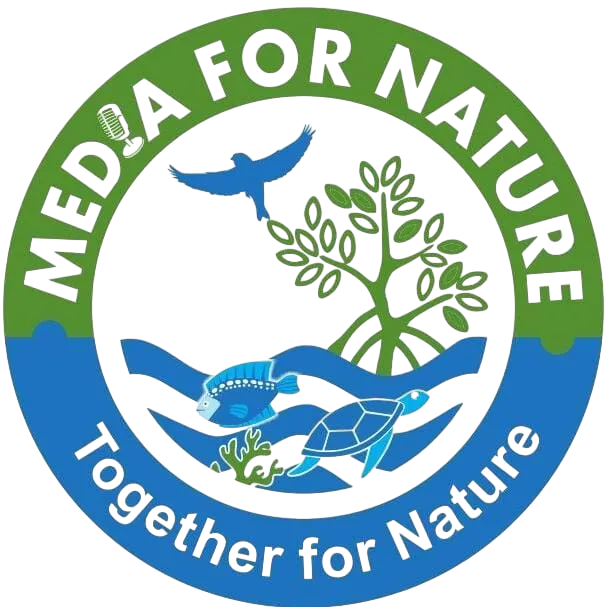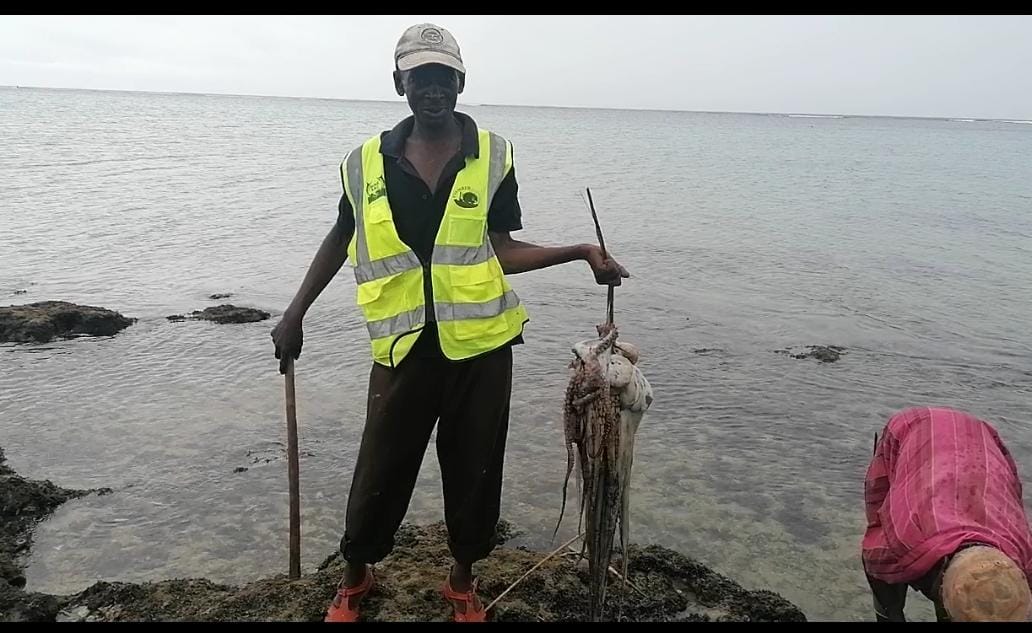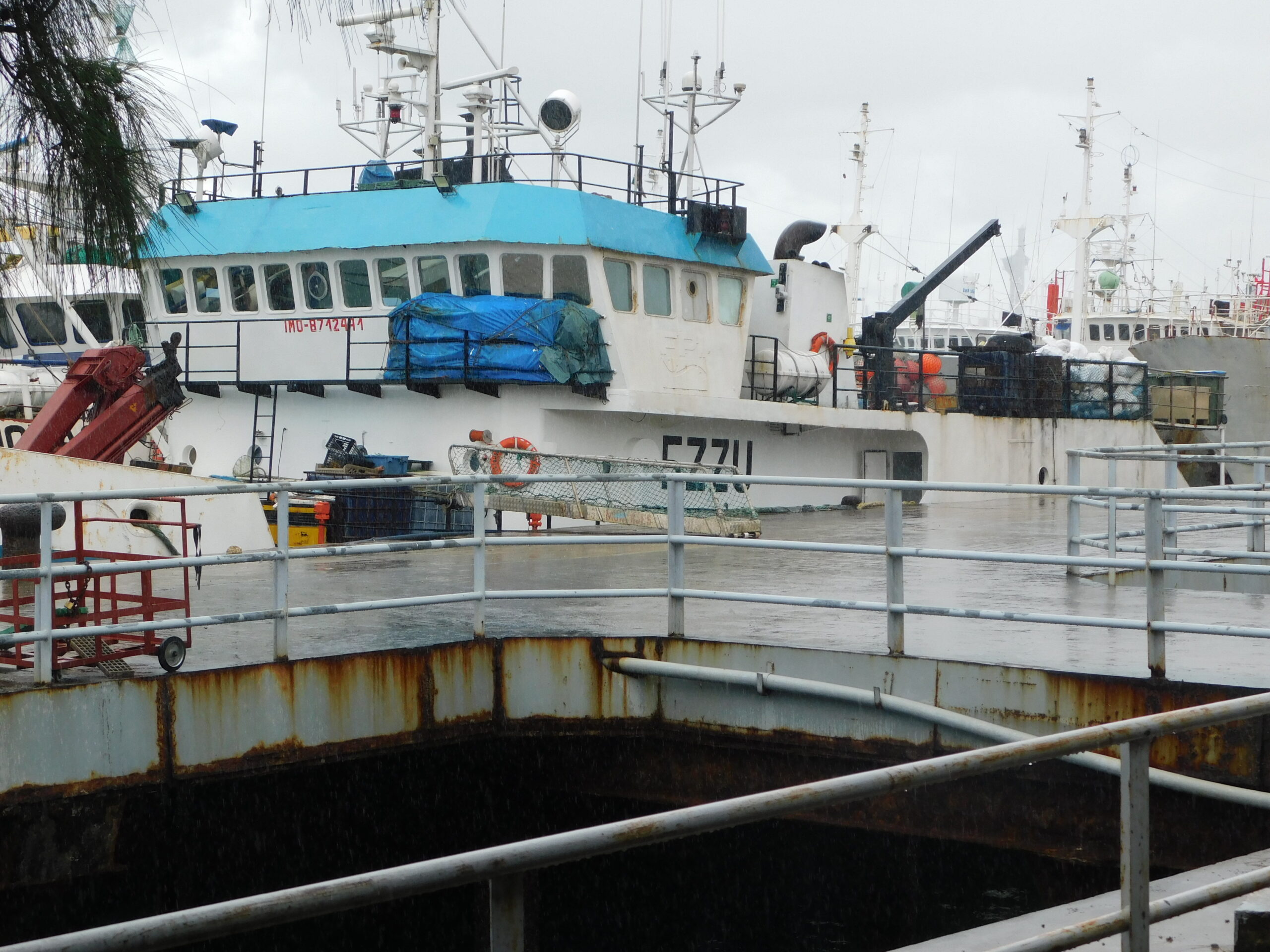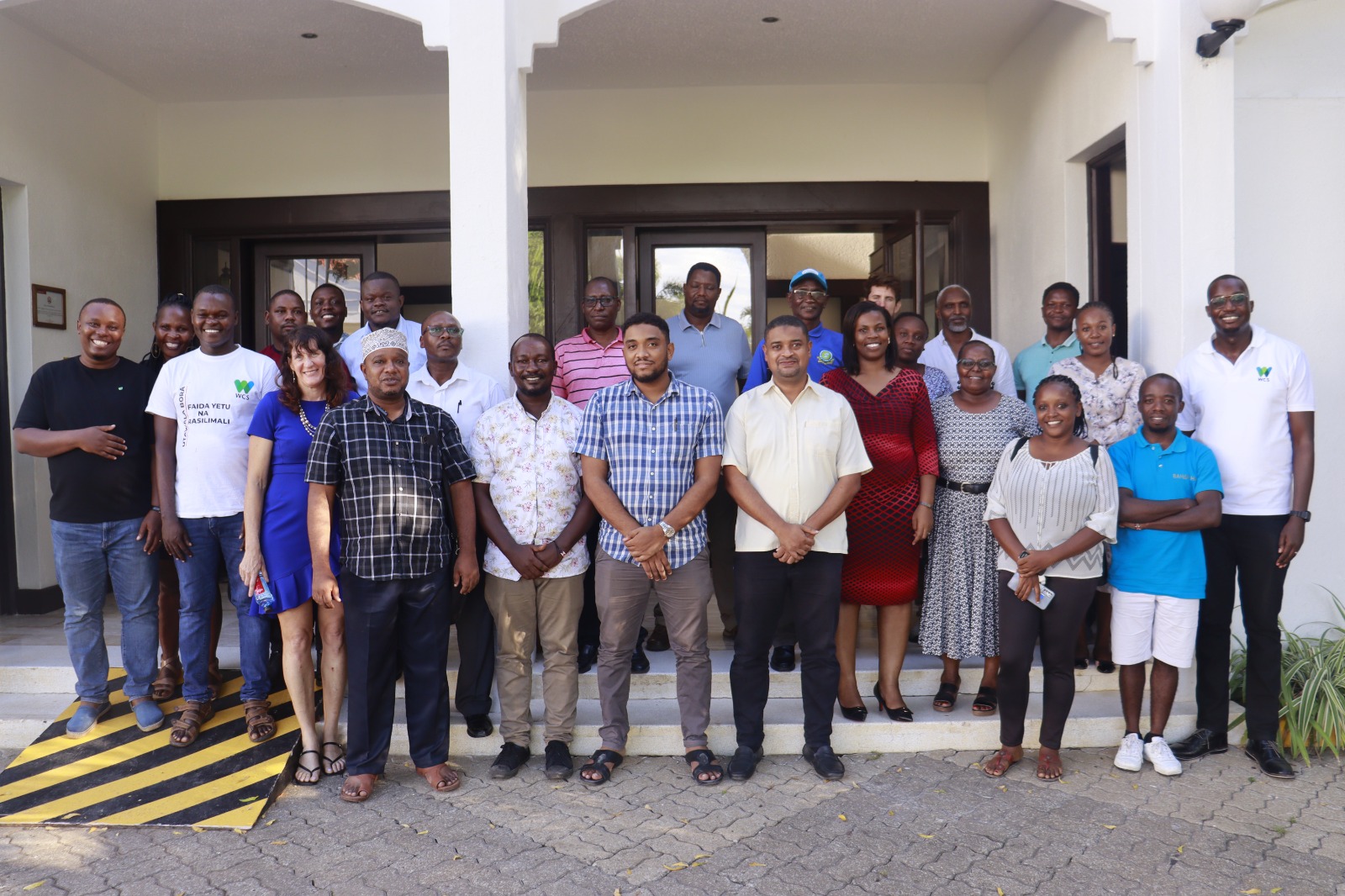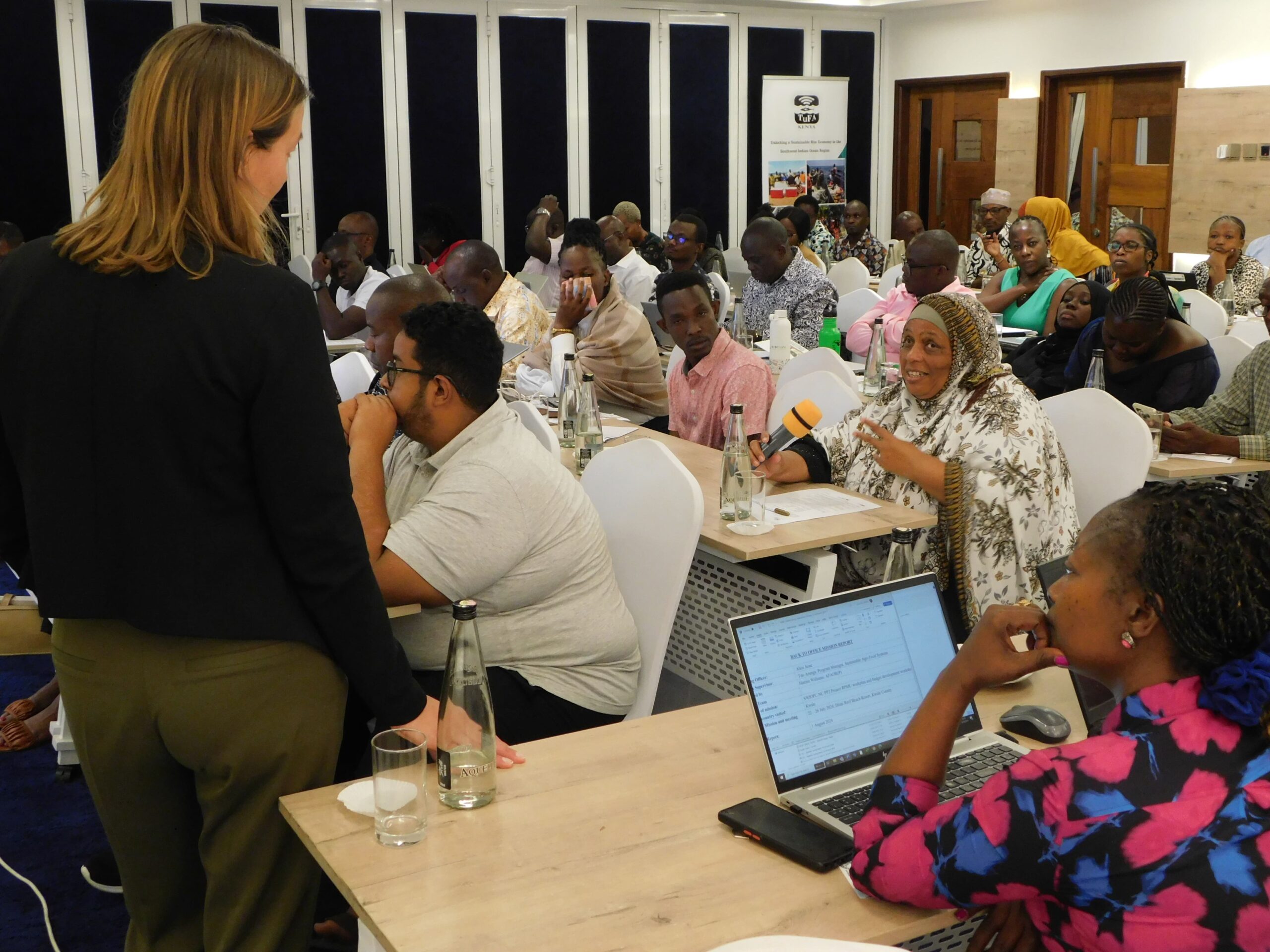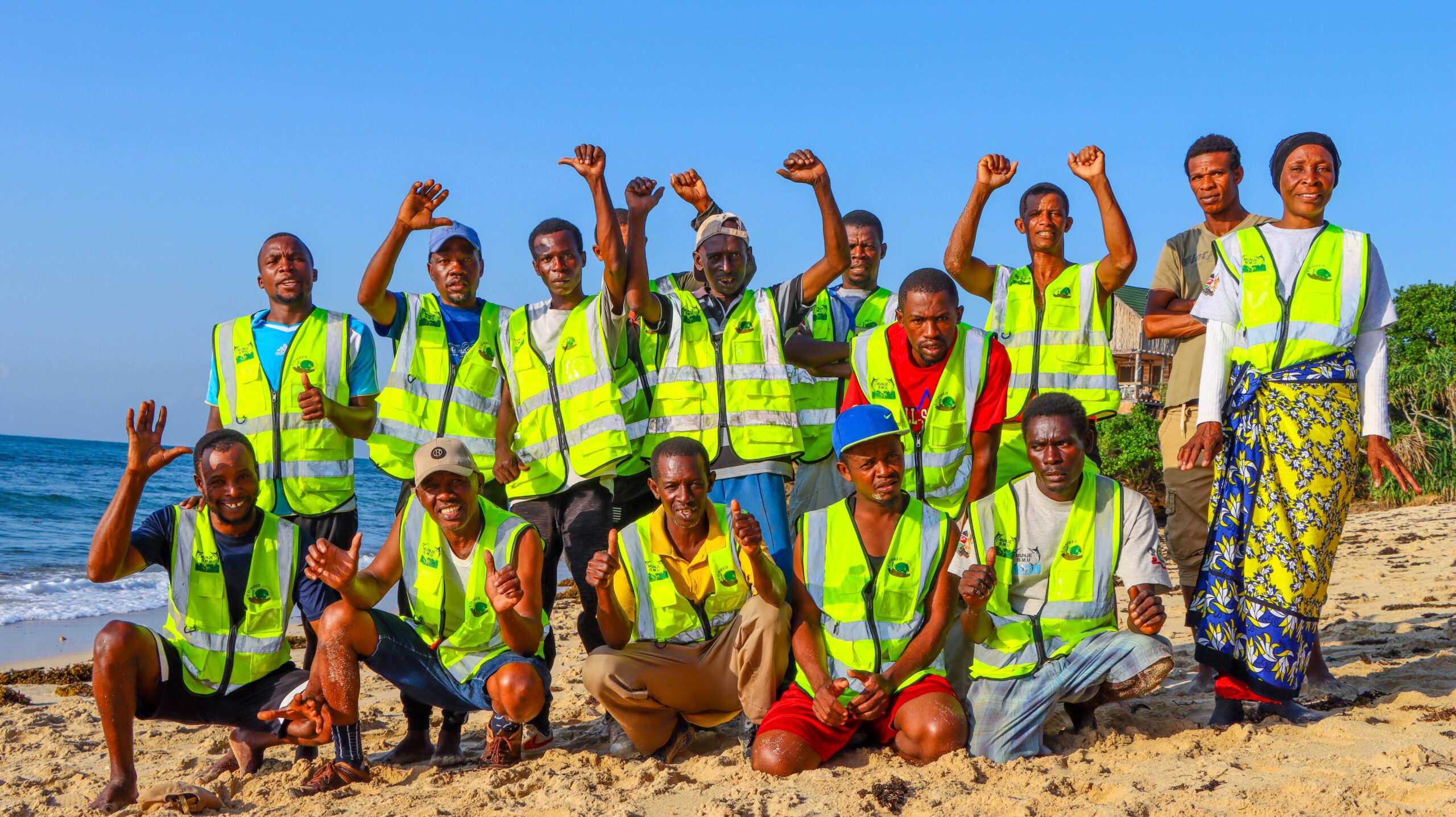Munje BMU fisher Power Tabu displaying Octopus catch during the second opening of the Octopus Closure. Photo | Ruth Keah
The excitement from the community members was palpable as you walked along the Munje beach that was teaming with people from as early as 7am to witness yet another milestone in marine conservation and livelihood – the second opening of the Munje Octopus Fishery Closure.
The exhilaration reaches a crescendo when fishers start bringing their catch of octopus from the ocean for weighing and record taking to establish the number kilos realized in a day’s catch. The process is so meticulously done as the measurement also includes the length, width, the biggest and the smallest octopus caught.
This routine continues for three days when all the records including the money realized from the sale of octopus and how it’s shared among various players are compiled before the area is closed again.
As the fanfare dies out awaiting another harvest in August, the fishers have stories to tell on the milestones, challenges and the future of the Munje Octopus Closure, a project they have come to cherish and safeguard.
Salim Juma popularly known as Njonjo, a fisher from Munje BMU, says he started fishing at a very tender age to fend for his family.
“I started fishing at the age of 13 years and while learning the ropes, the catch was very good then and in a good day I could get up to 30 kilogrammes of fish but today you can hardly get 20 kilogrammes of fish.
“Those who came up with this idea of an enclosure for octopus had foresight and those who are opposed to this don’t know the benefits that it has to the well-being of the ocean and the community,” he said.
Njonjo acknowledges the hurdles that they have had to endure to where they are but says after the difficulties, they can enjoy the fruits of their work. From the day’s activity, Njonjo managed to catch 10.5 kilogrammes of octopus on the first day.
Munje BMU vice chairperson Said Suleiman Kipapuro looks back at the arduous journey they took to establish the octopus closure and can only marvel at what has become of their efforts.
“The journey has been tough with a lot of challenges but we are now seeing the fruits of the decision we made some years back to set up this no-take zone. Getting into an area where the community has been earning their income and to convince them to forgo certain privileges such as fishing in the waters where they have been fishing was not easy.
“When we saw our ocean affected and the stocks and incomes were dwindling, it forced the leadership of the group to sit and look at ways of addressing the problem and uplift the living standards of the Munje community members.
Kipapuro said it was during the deliberations that the idea of establishing a no take zone came up but because fisheries is a devolved function the issue had to be subjected to scrutiny and approval by the Kwale County Assembly.
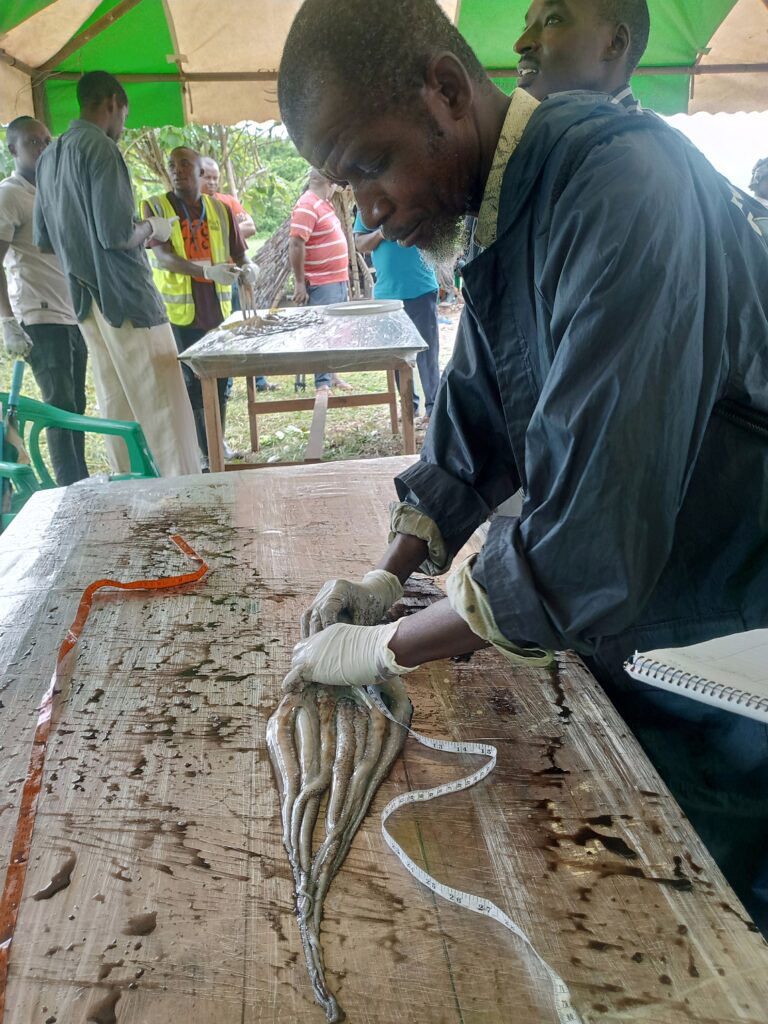
Keenly taking measurements of the octopus. Photo | Mazera Ndurya
He said it was not easy explaining to the assembly that there will be no fishing activities within the demarcated area but that the spill over would be harvested outside the protected zone.
“The biggest problem was that while we were taking the matter to the county assembly, a bigger percentage of the BMU members were opposed to it. After the failed attempt, we came up with another plan which involved massive sensitization of fishers and this worked thus giving us the go ahead to invite Coastal and Marine Resource Development (COMRED), the organization that had brought us the project.
“COMRED helped us to develop Co-Management Plan that included mapping the area for the enclosure,” he said.
However, Kipapuro said it was still difficult because Munje BMU is sharing this resource with neighbouring BMUs including Mwaembe, Funzi, Mwandaamu and all the six Kingwende-Shirazi BMUs who were not necessarily concerned and even informed about decision to ring fence a portion of the ocean for conservation purposes.
Fortunately, a major sensitization campaign for the neighbouring BMUs that are using the area Munje was proposing to close paid off because they understood and appreciated the reasoning behind the closure.
However, Kipapuro says one of the challenges is that there are some unscrupulous fishers who come to steal the stocks.
“We need help to deal with the poachers because we don’t have a patrol boat to effectively man the enclosure.
“We would like to see the ocean protected to be able to be more productive. Our fishers are already enjoying the spill over from the protected enclosure and this is a good thing.
“The proceeds go to various activities such as patrol, welfare and some of the money goes to the office after giving out money to the fishers,” he said in an interview with Media for Nature.
He said the community has gained a lot from the closure because the fish have not been caged, they breed, feed and spill over to the other areas where fishers have free access for harvesting.
COMRED Co- Director Dr Joseph Tunje who graced the second opening of the octopus closure could not hide the joy over such a milestone considering the challenges they encountered along the way in the over 20 years since the idea was first mooted.
“The journey to Munje Octopus closure has not been easy. We started at the beginning of 2000 with sensitizing the community around concerning the project but we didn’t go very far and it collapsed.
“We took some time to evaluate ourselves and knew what made the first attempt to fail. We went back to Munje and embarked on serious sensitization campaign on the benefits of a closure –Local Marine Management Area (LMMA). We took members of the Munje BMU on a tour of Lamu to get firsthand information on how the closures are managed and their benefits.
Dr Tunje said the project started by the community agreeing on the area in the ocean that they wanted closed for this exercise after which they taught them how to monitor the closure and make their bylaws and rules that they will follow in safeguarding the area. Among the laws is not to fish in the protected area for a number of months and it’s gratifying to note that they have followed the laws.
Closure Benefits
“A closure has far reaching benefits ecologically and even economically. It means that the creatures especially fish will breed uninterrupted and multiply then spillover to other areas therefore fishers outside the enclosure are able to increase their catch and when that happens they in turn earn more money.
“Other creatures such as corals and sea grass become stronger and since all sea creatures are interrelated, the ocean becomes more productive.
Dr Tunje cites climate change mitigation as an important aspect in the exercise adding that when the ecosystem is uninterrupted corals grow and flourish and they have the potential to trap carbon dioxide and turn the area into a carbon sink.
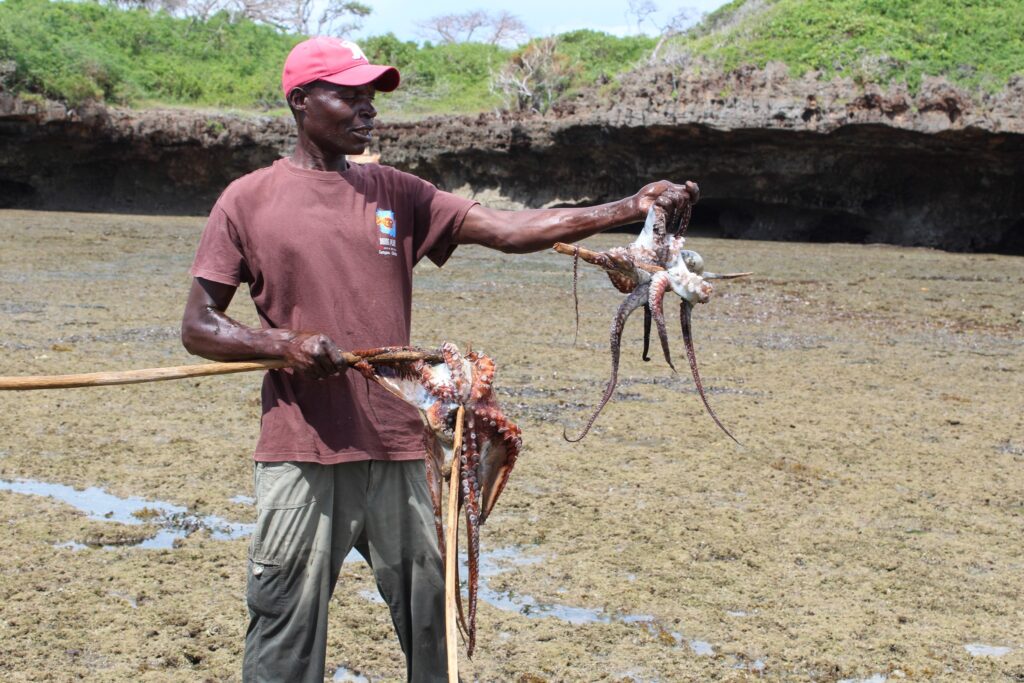
A fisherman showing his octopus catch during the first opening of the Munje Octopus Closure in October 2023. Photo| Courtesy COMRED
“Munje has become a model globally and as COMRED we would like to spread this information to other areas of the coast region and our desire is to see all the BMUs have closures.
“We are moving towards the north coast and have plans to start two such areas in Wesa and Roka in Kilif County. There are some challenges but gradually they will agree with us and that’s why we have brought the Wesa BMU leader to come and witness firsthand how an enclosure works and share information with other members back in Kilifi,” he said.
Dr Tunje said the Fisheries Act, envisages that every BMU should have a protected area or a no-take zone but notes that in the mind of the fishermen, they equate it with a marine park.
Once a marine park has been established it means that the government through the Kenya Wildlife Services (KWS) has full control and this is an attitude that is difficult to remove from the fishers because their experience with the KWS has not been good.
It can only happen if the government takes deliberate steps to sensitize the fishers. However, with time and through sensitization to make them realize that there is a big difference between a marine park and a local marine management area (tengefu) they will be able to change the attitude.
“We tried in Kilifi and got serious resistance from Roka BMU which is very close to the Watamu Marine Park (Marine Protected Area-MPA),” he said.
The good news to the community in Munje is that the closure site has started attracting tourists for snorkeling and students for research. On February, 2024, Munje hosted 45 students and lecturers from Belgium and Technical University of Mombasa to learn how the community is managing the area with the BMU earning over Ksh 100,000 from the visit.
In the first opening in October 2023, a total of 649.324kgs of octopus was harvested in 3 days with fishermen taking 3 hours fishing each day.
The Octopus was sold to fish dealers by the BMU earning a total of Ksh198,049.31 (1234 USD) of which 97,398.6Ksh (607 USD) was paid to the 14 fishermen who participated in the harvesting and the rest was allocated to BMU administration and community welfare.
In the second opening done on 23 April, 2024, a total of 17 fishers were able to catch 268.115Kg of octopus earning a total of Ksh46,600.
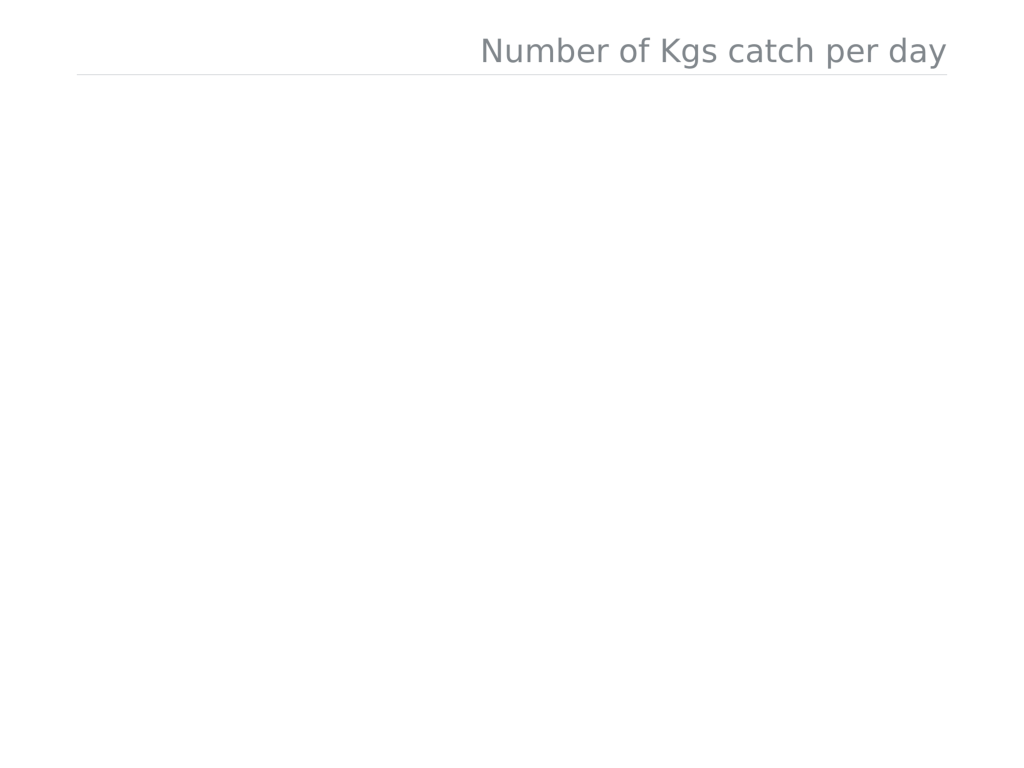
A number of reasons have been given for the low harvest in the second opening of the closure.
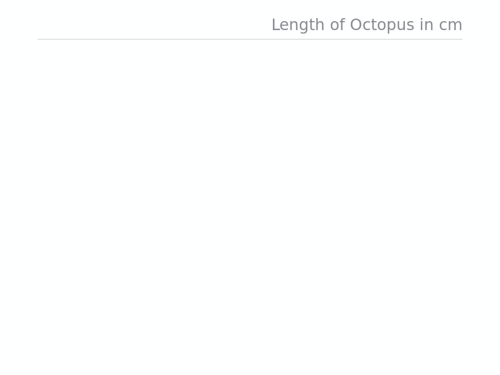
According to experts one of the reasons was the Southeast Monsoon (Kusi) which blows from April to September, a season marked by very strong winds and waves.
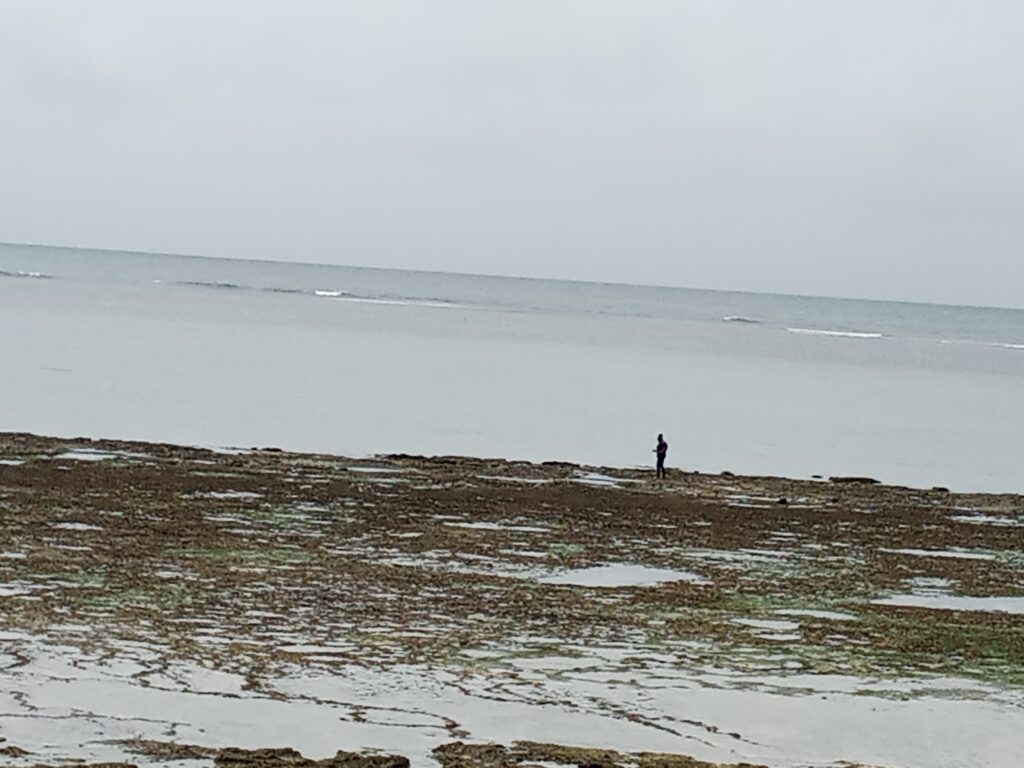
Part of the Munje Octopus Closure. Photo | Mazera Ndurya
Initially, the planned opening was to be in March but with observing of the Holy month of Ramadhan, the scheduled opening was pushed to April.
Sedimentation from the Funzi Bridge under construction: Due to the strong winds season and rains witnessed before the opening/during the closure period, a lot of sedimentation and sand has been pushed into the closure area, clogging most octopus habitat causing them to move to other cleaner areas
Sedimentation results in poor water visibility hence difficulty is finding octopus which tend to camouflage.
Climate change: In the past month, the highest temperature of ocean water was recorded. The ocean water was 33 degrees warm. This increased temperature has resulted in: Coral bleaching. In Munje, almost all corals have been bleached. An assessment is yet to be conducted to determine how many of the corals will/have survived and those that have died to develop appropriate restoration measures.
Additionally, the high temperatures caused the octopus to move to cooler waters.
